Curia General
La Casa de la Congregación: entre Arte y Espiritualidad
Un Mural en la Curia General de la Congregación de la Misión
Estos murales son un regalo de la Provincia del Medio Oeste de los Estados Unidos de América a la Curia General de la Congregación de la Misión. El hermano Mark Elder, miembro de la Provincia Occidental, los pintó en el año 2000, incluyendo a los miembros de la Curia en el proceso. Después de consultar a los que vivían en la Curia General en aquella época, el hermano Mark desarrolló el tema descrito en el título. Tuvo en cuenta las siguientes sugerencias de los miembros de la Curia:
a. Aprovechar el atractivo de los rectángulos que se encuentran en la arquitectura de la casa y sus ventanas, y
b. Evitar la narrativa histórica y, en cambio, utilizar símbolos de la naturaleza para describir las cinco virtudes y los cuatro votos de la Congregación.
Como símbolo del alcance global de la Congregación y de la universalidad de la misión de la Iglesia, utilizó el latín para todas las frases.
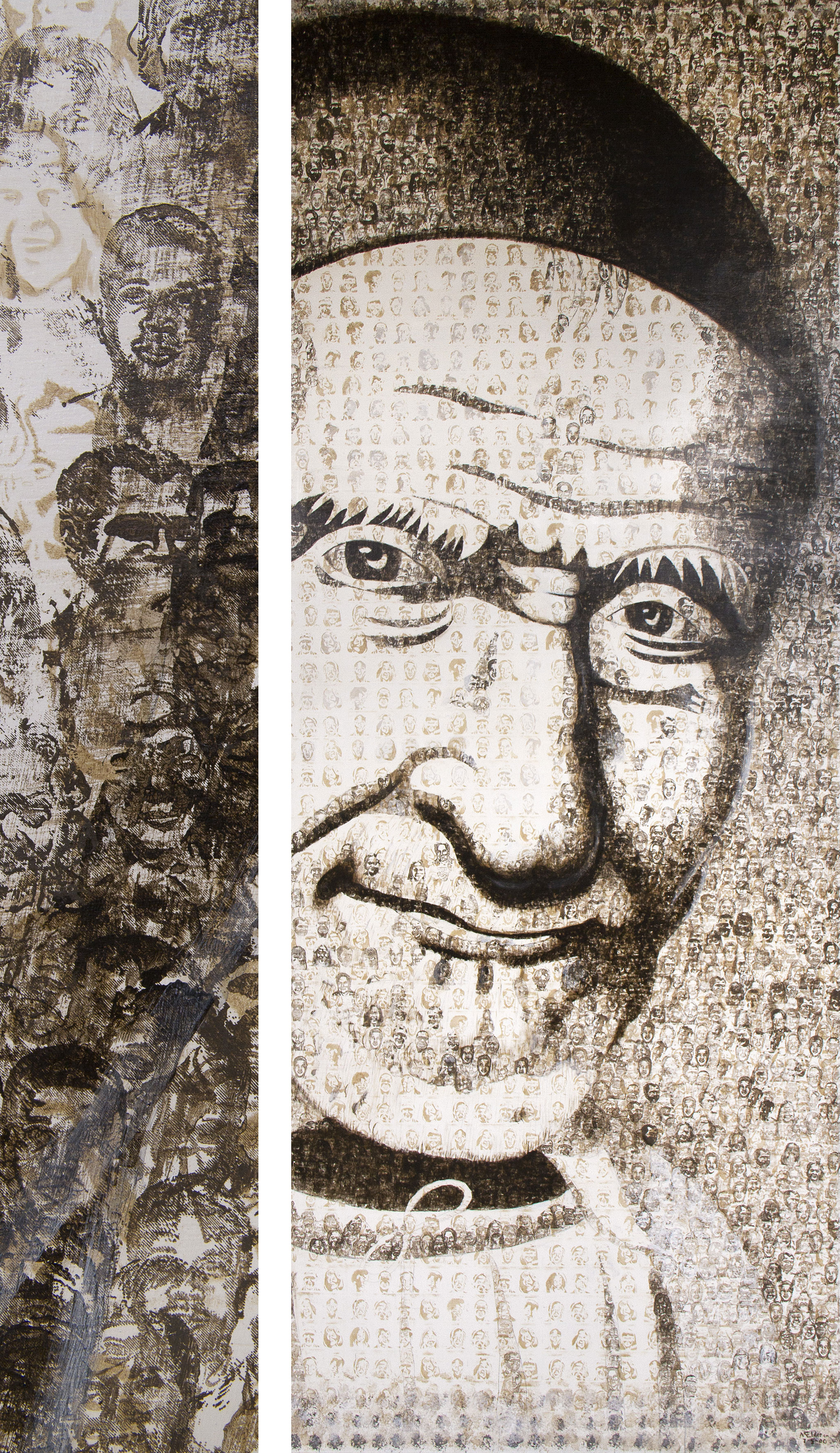
A Mural at the General Curia of the Congregation of the Mission
These murals are a gift from the Midwest Province of the United States of America to the General Curia of the Congregation of the Mission. Brother Mark Elder, a member of the Western Province, painted them in 2000, involving the members of the Curia in the process. After consulting those living at the General Curia at that time, Brother Mark developed the theme described in the title. He implemented the following suggestions from members of the Curia:
a. to profit from the attractiveness of the rectangles found in the architecture of the house and its windows
b. to avoid historical narrative and, instead, to use symbols from nature to describe the five virtues and the four vows of the Congregation.
As a symbol of the Congregation’s global outreach and the universality of the Church’s mission, he used Latin for all the sayings. Translations are provided in the text below.



“Somos como labriegos humildes que pasan después de las grandes cosechas”
On this wall a large portrait of St. Vincent De Paul greets the visitor. It is made up entirely of hand-stamped portraits of real people. Symbolically, they represent the Vincentian Family and those it serves. The Family, in each era, is an ongoing portrait of Vincent. The artist created a much larger version of this mural in Chicago, but it has now been destroyed.
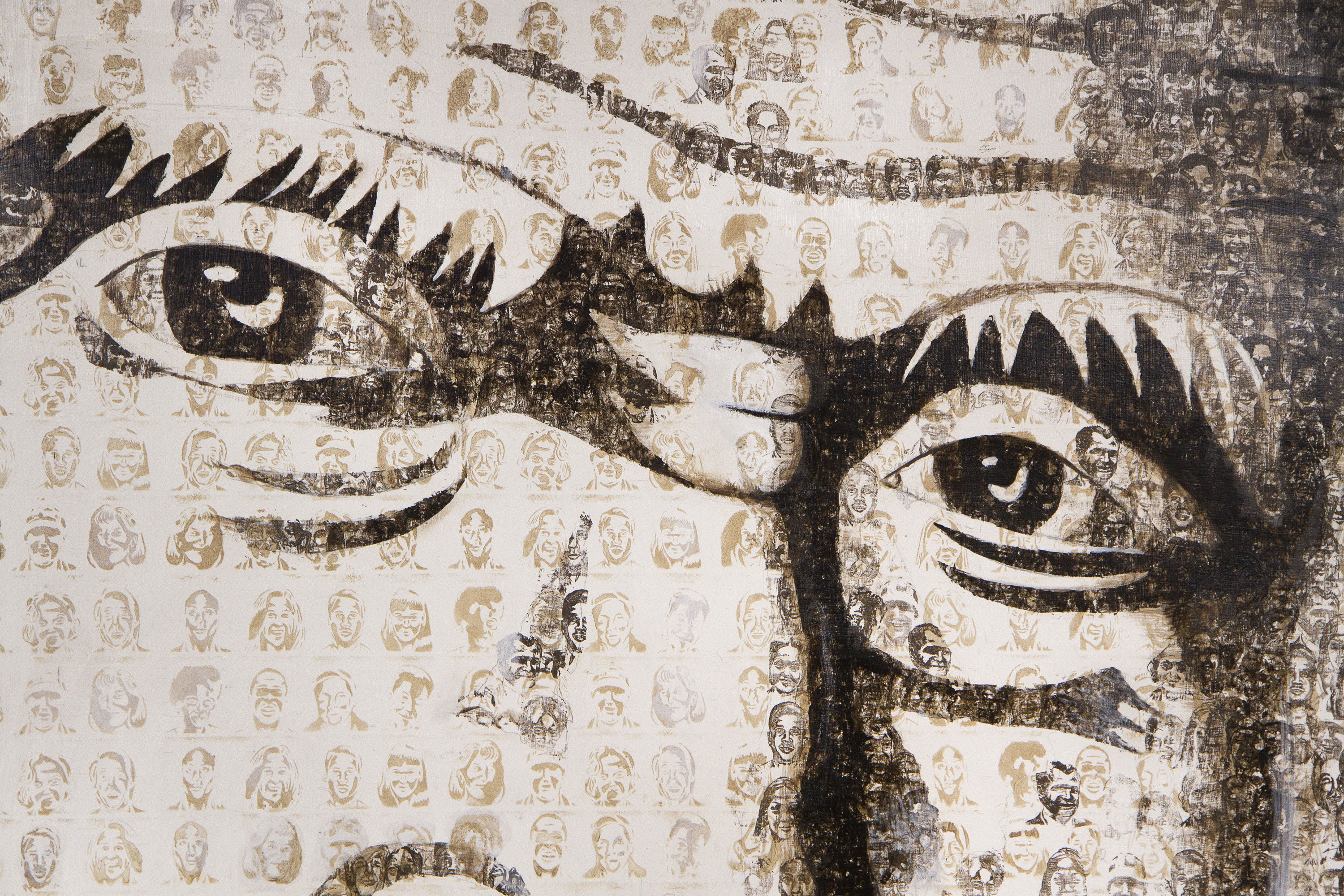


Here, the artist used Millet’s THE GLEANERS, focusing on the body language of the three main figures.
He created windows in the painting to represent the five virtues as he envisioned them.
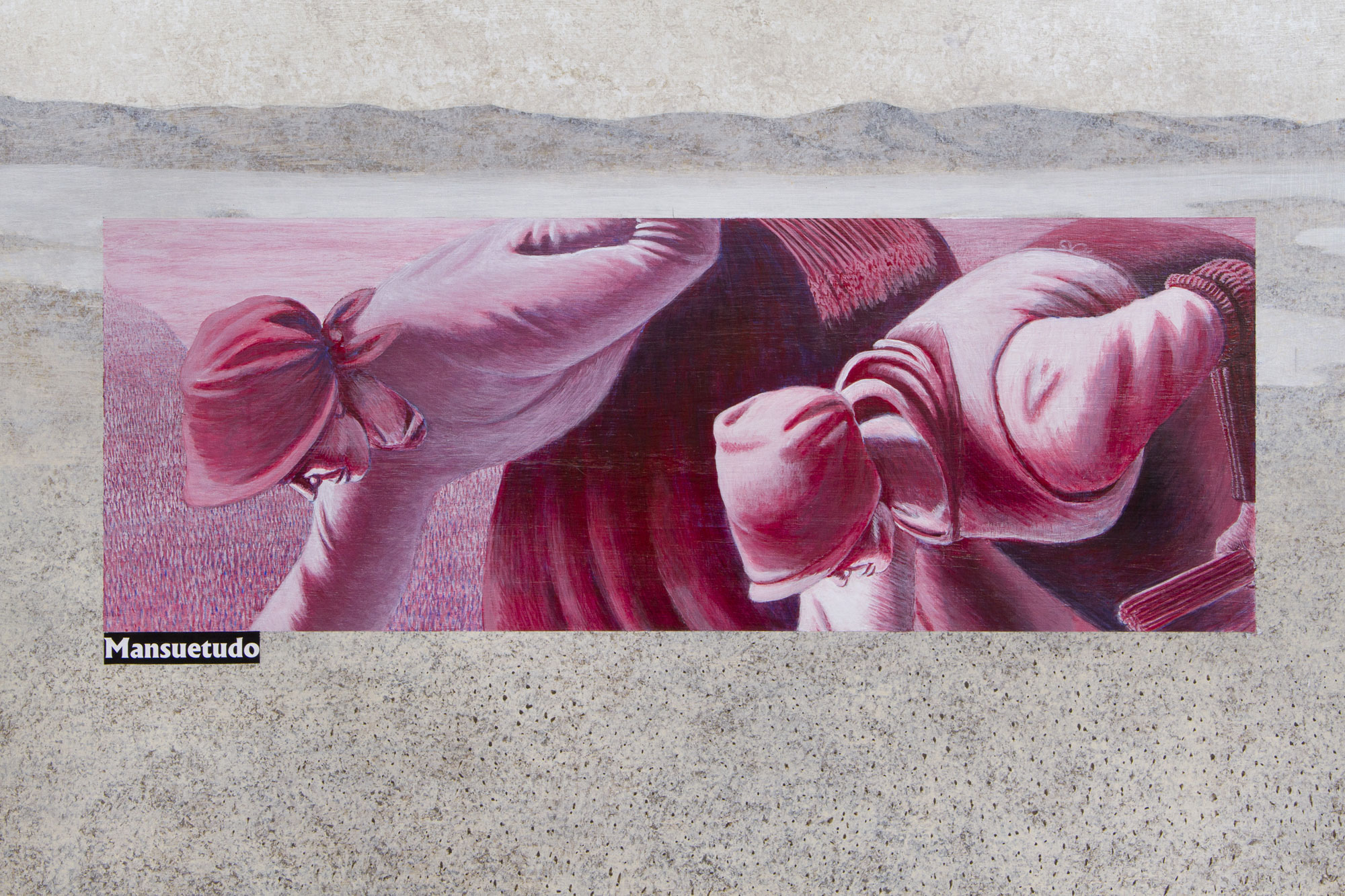


Magenta: Mansuetudo = Meekness.
Here the figures are depicted as doing the will of God peacefully.
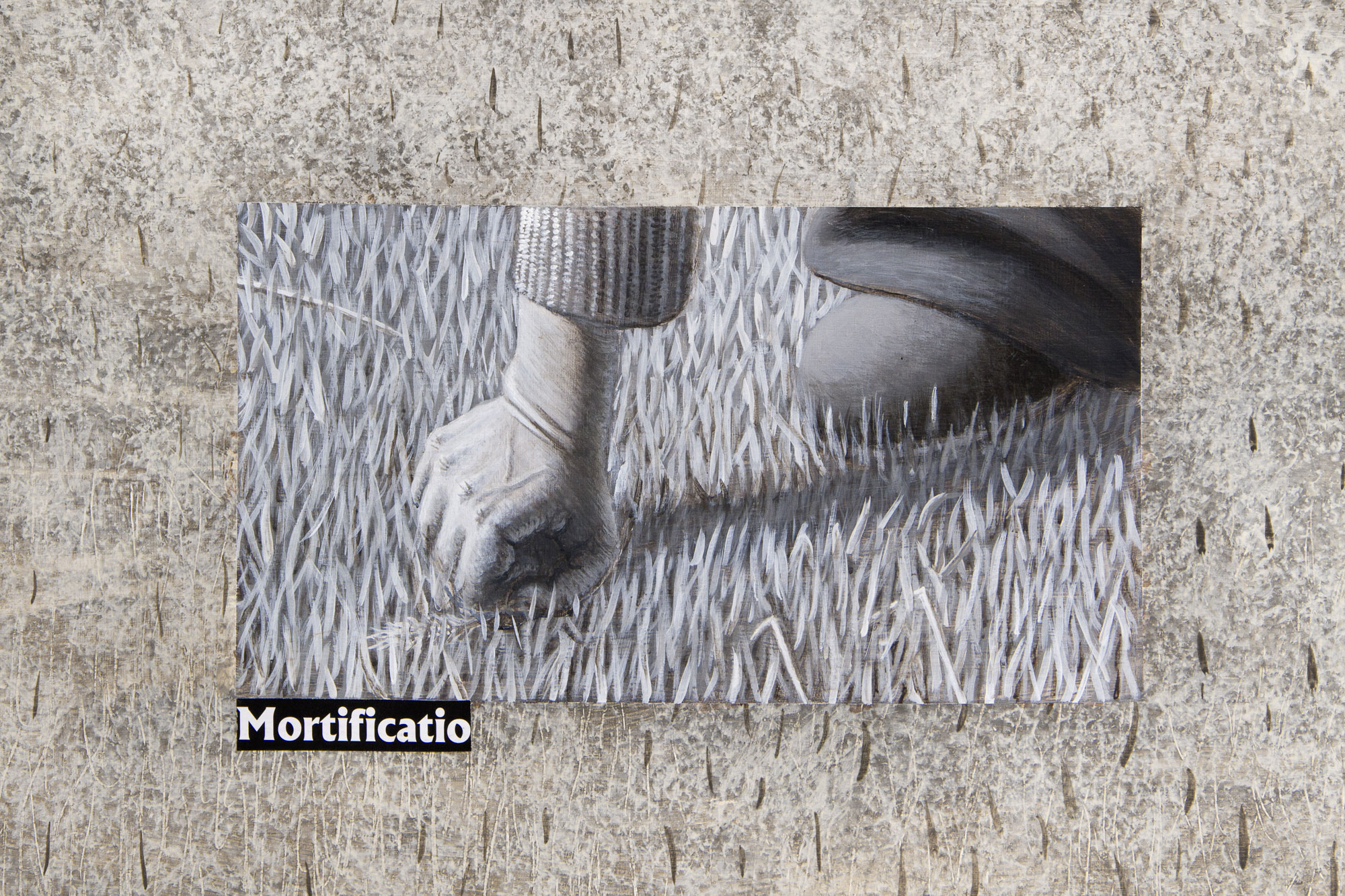


Black&White: Mortificatio = Mortification.
The act of doing the will of God is often very plain, not glamorous, and frequently painful.
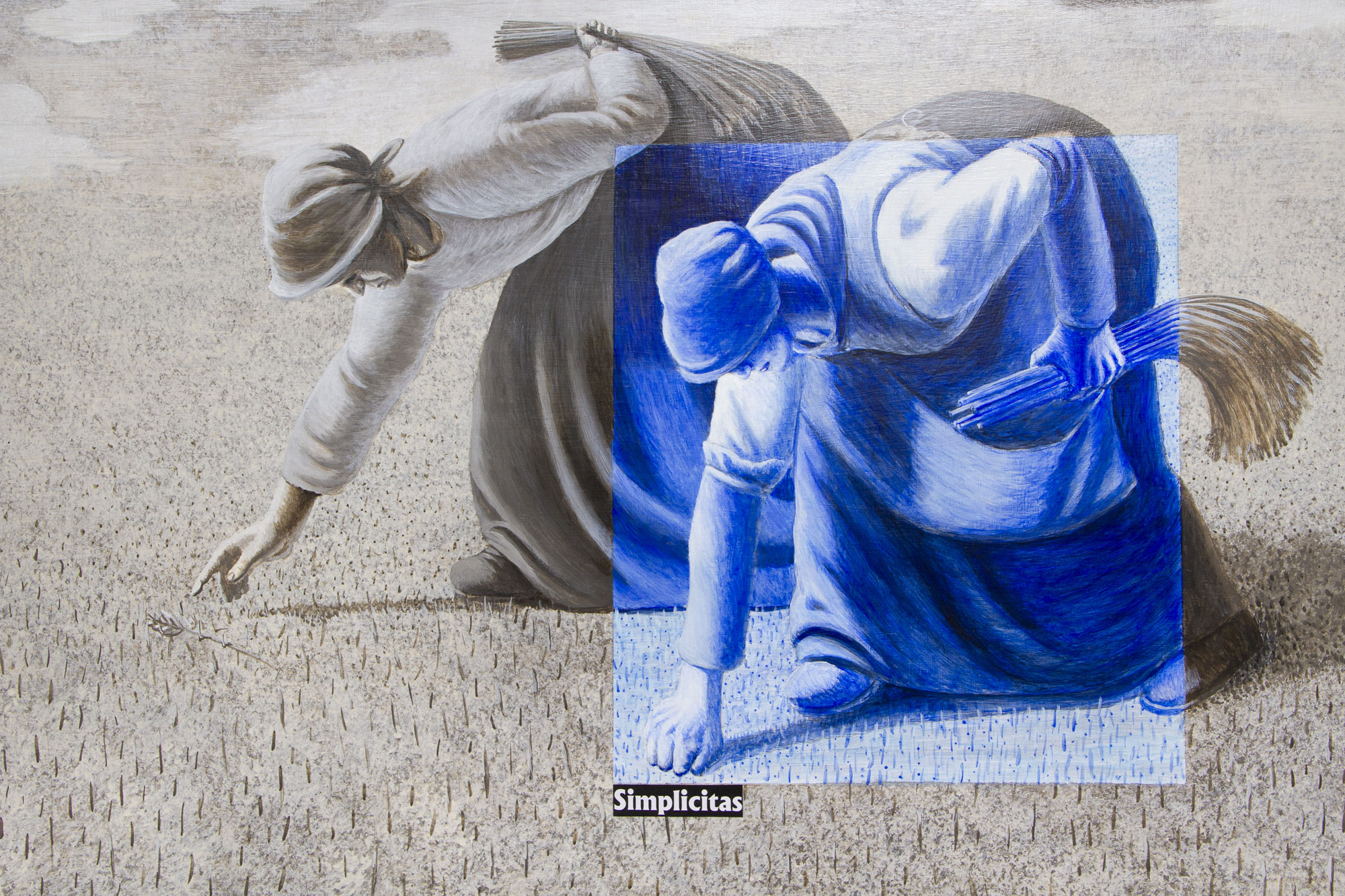


Blue: Simplicitas = Simplicity.
Here the focus is on the act of picking something up off the ground; in this case, a kernel of wheat. Something very simple
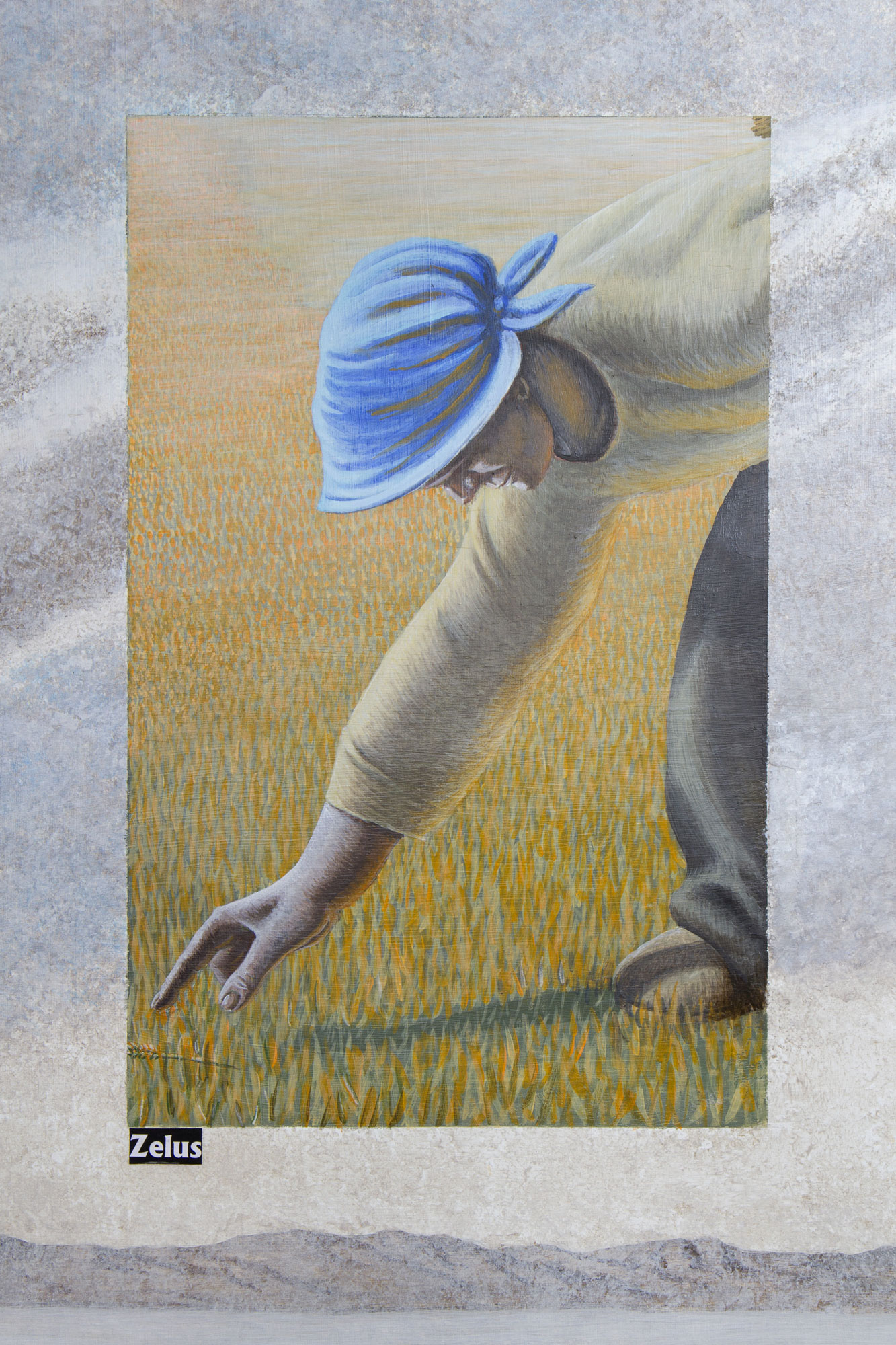


Orange: Zelus = Zeal.
The figure radiates potential. As she reaches out, she is aglow with the energy of fire.
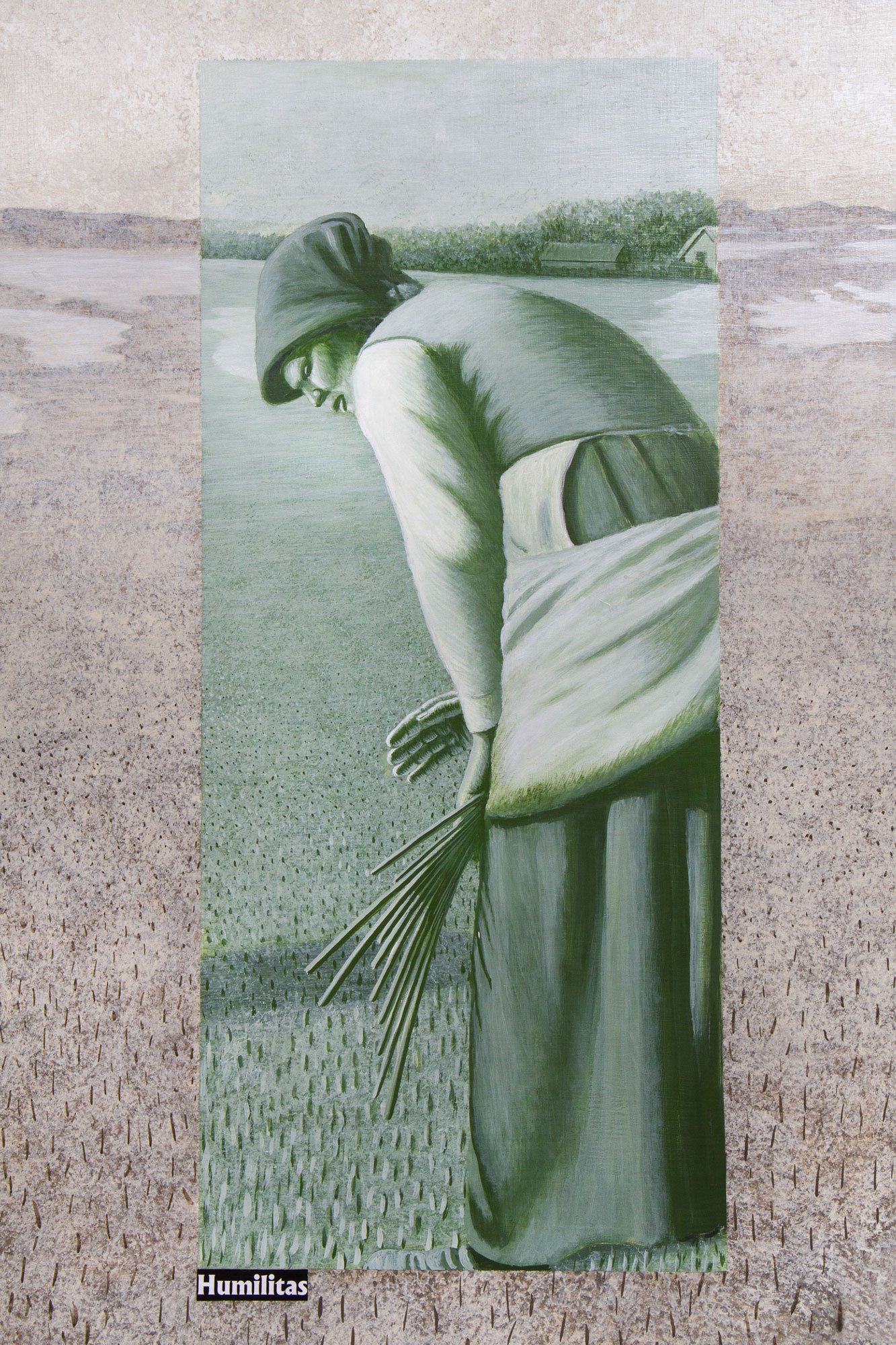


Green: Humilitas = Humility.
The posture of this figure reminds us that we must be humble and submit to the will of God.



Oboedientia = Obedience:
Here the focus is on the individual’s submission to the authority of superiors (in the background here, the Church is a symbol of authority.
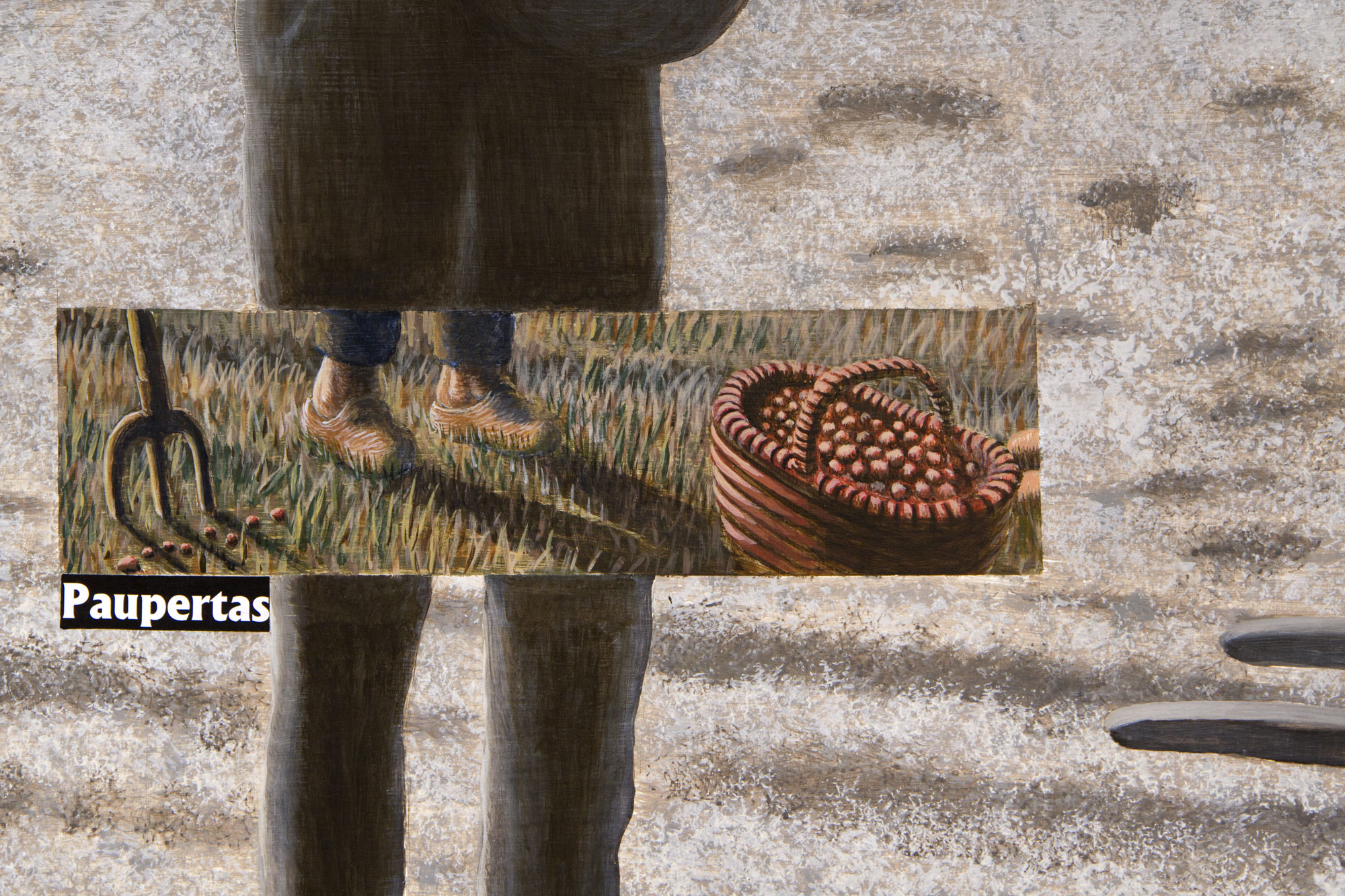


Paupertas = Poverty:
The focus here is on using the goods of the Community well: doing what we can with what we havey.
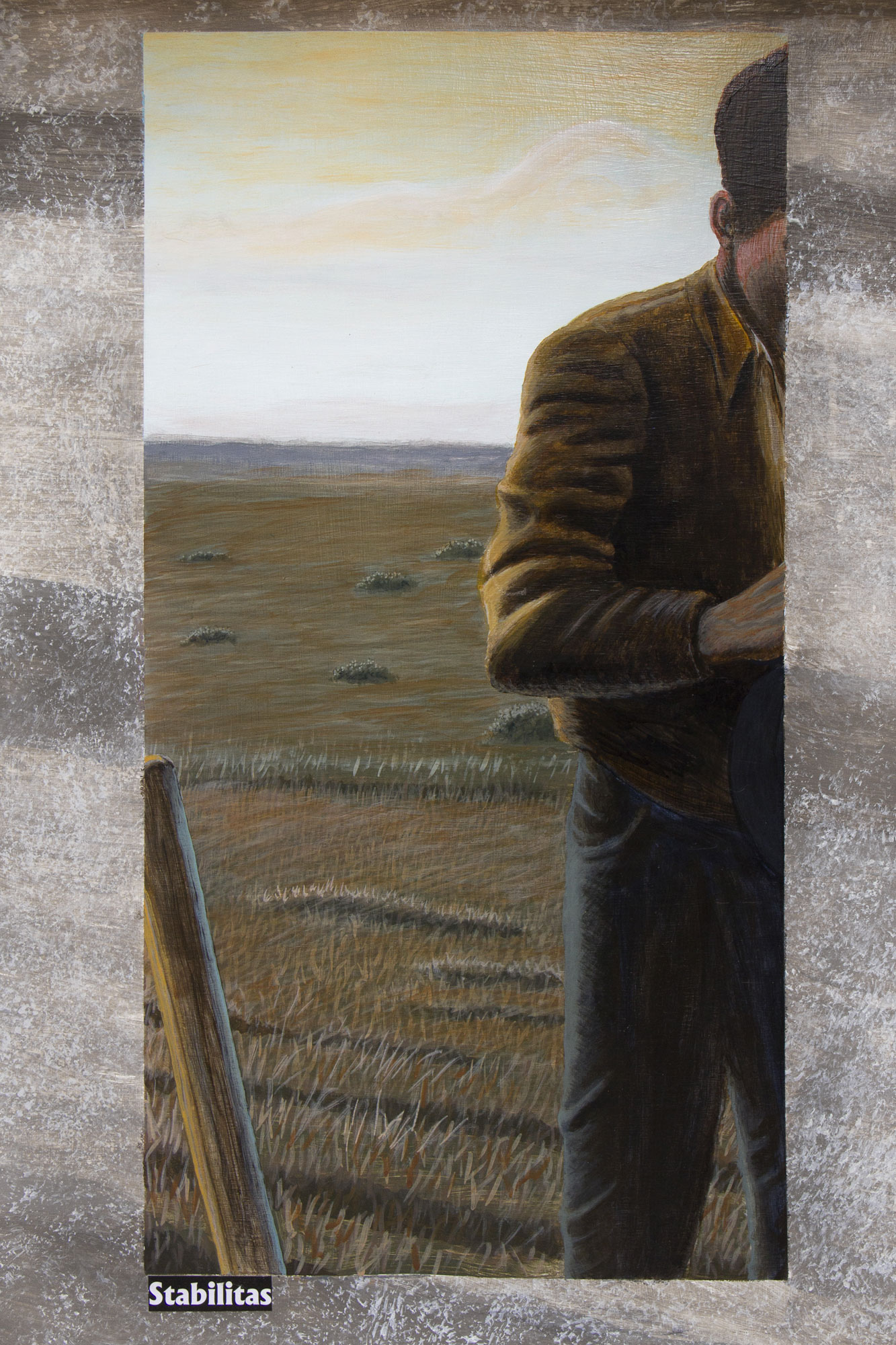


Castitas = Chastity:
The focus here is on the space , autonomy ,and respect that each person deserves. Therein lies a freedom that allows us to do the will of God.
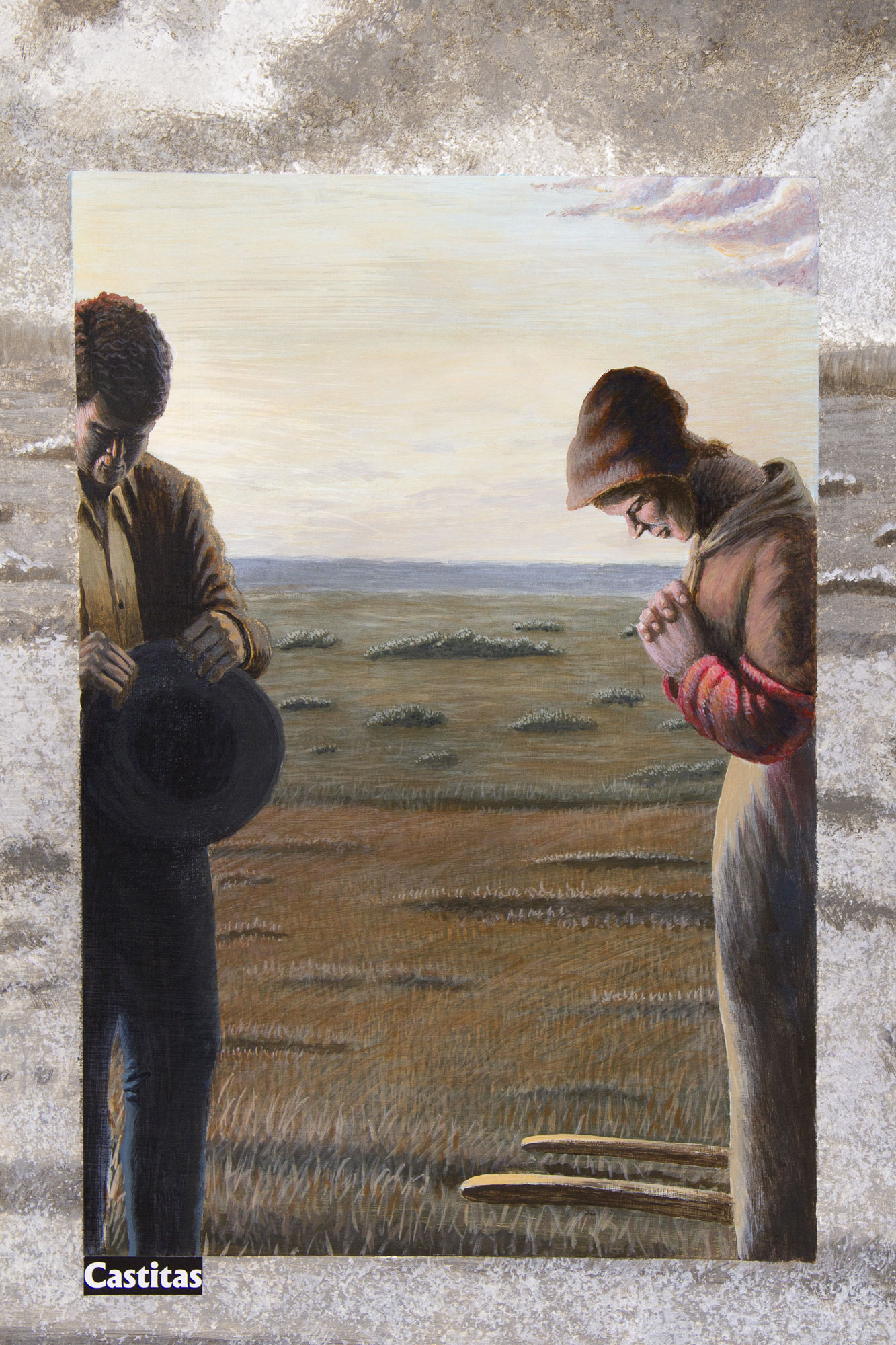


Stabilitas = Stability:
The artist uses the image of land to symbolize the call of the missionary to go wherever he is needed.
As you leave, you see the image of the Holy Spirit and the word “Evangelizare…”. The informed viewer is reminded immediately of the motto of the Congregation of the Mission “Evangelizare pauperibus misit me… He sent me to bring Good News to the poor .” It is the the Holy Spirit who sends us out to evangelize. Passing through the door, we enter the harvest of the Lord, symbolized by the wheat field on the two door posts. As you go out, you see, mixed in with the wheat, some of the human faces that make up the portrait of Vincent.
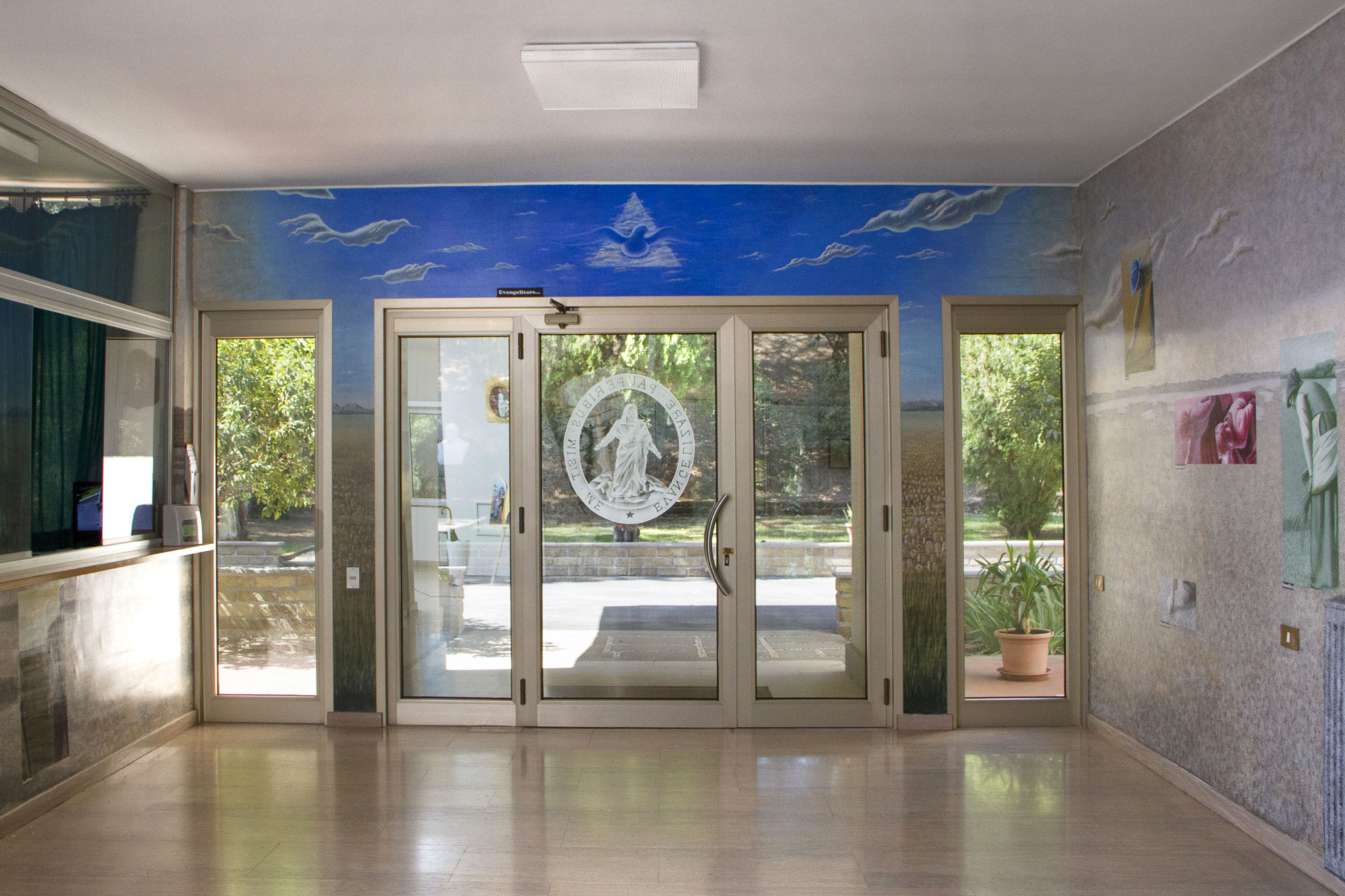





En esta pared un gran retrato de San Vicente de Paúl saluda al visitante. Se componen enteramente de retratos hechos a mano de personas reales. Simbólicamente,representan a la Familia Vicentina y a quienes sirve. La Familia, en cada época,es un retrato continuo de Vicente. El artista creó una versión mucho más grande de este mural en Chicago, pero ahora ha sido destruido.
Aquí, el artista utilizó LAS ESPIGADORAS de Millet, centrándose en el lenguaje corporal de las tres figuras principales.
Él resaltó las imágenes sobre la pintura para representar las cinco virtudes como él las concebía ed them.



Magenta: Mansuetudo = Mansedumbre.
Aquí las figuras se representan como haciendo la voluntad de Dios pacíficamente.



Blanco y Negro: Mortificatio = Mortificación.
El acto de hacer la voluntad de Dios es a menudo muy simple, no glamoroso, y frecuentemente doloroso.



Azul: Simplicitas = Sencillez.
Aquí el foco está en el acto de recoger de la tierra; en este caso, un grano de trigo. Algo muy simple.
Naranja:Zelus = Celo.
La figura irradia potencial. A medida que se extiende, ella
está encendida con la energía del fuego.






Verde: Humilitas = Humildad.
La postura de esta figura nos recuerda que debemos ser humildes y obedecer a la voluntad de Dios.
Aquí el artista ha vuelto a producir EL ÁNGELUS de Millet (1858). Utilizando la misma técnica que en la pared norte,
creó ventanas que representan los cuatro votos de la Congregación de la Misión.
Oboedientia = Obediencia:
Aquí el foco está en la sumisión del individuo a la autoridad de los superiores (en el fondo aquí, la Iglesia es un símbolo de autoridad).






Paupertas = Pobreza:
El enfoque aquí es hacer buen uso de los bienes de la Comunidad, hacer lo que podamos con lo que tenemos.
Castitas = Castidad:
El centro aquí es sobre el espacio, la autonomía y el respeto que cada persona merece. Allí radica una libertad que nos permite hacer la voluntad de Dios.






Stabilitas = Estabilidad:
El artista utiliza la imagen de la tierra para simbolizar el llamado del misionero a ir a donde sea necesario.
El visitante informado recuerda inmediatamente el lema de la Congregación de la Misión “Evangelizare pauperibus misit me…” Me envió a llevar la Buena Noticia a los pobres”. Es el Espíritu Santo quien nos envía a Evangelizar. Pasando por la puerta, entramos en la cosecha del Señor, simbolizada por el campo de trigo en las dos columnas de la puerta. Al salir, se ve, mezclado con el trigo, algunos de los rostros humanos que hacen parte del retrato de Vicente.



Acerca del artista: Mark Elder, C.M. Es hermano de la Congregación de la Misión. Enseña Arte Visual y Pintura Mural en la Universidad DePaul en Chicago. Está convencido que la creación mural es un medio muy efectivo de evangelización. Entre sus antepasados se encuentran quienes donaron tierras para que los sacerdotes y hermanos de la Congregación de la Misión pudieran tener un hogar en los Estados Unidos cuando llegaron allí hace dos siglos.
